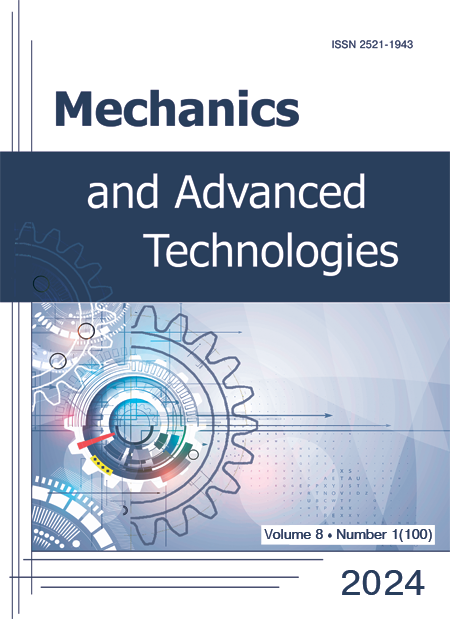Plasma-chemical synthesis of carbide-based vacuum-plasma functional coatings and study of tribological characteristics of friction pairs
DOI:
https://doi.org/10.20535/2521-1943.2024.8.1(100).296988Keywords:
Avinit multi-component multi-layer coatings, plasma chemical synthesis, tribological characteristics, friction, durabilityAbstract
The work is devoted to the search for new materials with high functional characteristics using the Avinit vacuum-plasma technologies developed by us, based on the complex use of coating methods (plasma-chemical CVD, vacuum-plasma PVD (vacuum-arc, magnetron), processes of ion saturation and ion surface treatment), stimulated by non-equilibrium low-temperature plasma.
Processes of controlled plasma-chemical synthesis of the formation of multicomponent coatings in "metal-carbon" systems – Avinit coating (TiC, MoC) using vacuum-arc sources of ionized atomic fluxes of titanium and molybdenum in an argon-benzene plasma environment were developed and their characteristics were studied depending on their conditions formation.
Metallographic studies confirm the possibility of low-temperature application of high-quality wear-resistant high-hard "metal-carbon" coatings with a hardness of 18,000-30,000 MPa, while ensuring good adhesion to the substrate materials (steel DIN 1.2379) without reducing strength and without deteriorating the cleanliness class of the original surface.
The conducted tribological tests using the "cube-roller" scheme reveal high tribological characteristics of steel DIN 1.2379 tribopairs with developed coatings and testify to the promisingness of the developed multi-component multilayer coatings Avinit (Ti-C, MoS) for increasing wear resistance and reducing the coefficient of sliding friction in friction nodes.
The developed plasma-chemical vacuum-plasma coatings are applied to mock-up samples of the working compressor blades of the GTE of aircraft engines. Proven modes allow to get high-quality, uniform coatings with high adhesion.
This gives reason to consider the developed process as an alternative for expanding the range of new Avinit vacuum-plasma erosion-resistant coatings and developing structures of anti-friction wear-resistant coatings to increase the performance of friction pairs in "coating-steel" and "coating-coating" systems.
References
- V. Popov, A. Sagalovych and V. Sagalovych, Improving the performance, reliability and service life of aviation technology products based on the innovative vacuum-plasma nanotechnologies for application of avinit functional coatings and surfaces modification. Tallinn: Scientific Route OÜ, 2020, 114 p. DOI: https://doi.org/10.21303/978-9916-9516-1-3.
- Sagalovych A., Sagalovych V., Popov V. and Dudnik S., Vacuum-plasma multilayer protective coatings for turbine blades: Monograph. Tallinn: Scientific Route OÜ, 2021, 104 p. DOI: https://doi.org/10.21303/978-9916-9516-5-1.
- Sagalovych A., Sagalovych V., Popov V., Dudnik S. and Olijnyk O., Avinit vacuum-plasma technologies in transport machine building: Monograph. Tallinn: Scientific Route OÜ, 2021, 184 p. DOI: https://doi.org/10.21303/978-9916-9516-7-5.
- J.-E. Sundgren and H. T. G. Hentzell, “A review of the present state of art in hard coatings grown from the vapor phase”, Journal of Vacuum Science & Technology A, vol. 4, no. 5, pp. 2259-2279, 1986. DOI: https://doi.org/10.1116/1.574062.
- P. Holubar, J. Janca and S. Veprek, Development and Industrialization of Novel Superhard Nanocristalline Composite Wear-Protection Coatings. Final Report @Nato Science for Peace Programme, no. SFP 972379, 2003, 47 p.
- Ihsan Efeoglu, “Deposition and Characterization of a Multilayered-Composite Solid Lubricant Coating”, Rev. Adv. Mater. Sci., vol. 15, pp. 87–94, 2007.
- M. Azadi, A. Sabour Rouhaghdam and S. Ahangarani, “A Review on Titanium Nitride and Titanium Carbide Single and Multilayer Coatings Deposited by Plasma Assisted Chemical Vapor Deposition”, International Journal of Engineering, vol. 29, no. 5, pp. 677-687, 2016. DOI: https://doi.org/10.5829/idosi.ije.2016.29.05b.12.
- H. Larhlimi, A. Ghailane, M. Makha and J. Alami, “Magnetron sputtered titanium carbide-based coatings: A review of science and technology”, Vacuum, vol. 197, p. 110853, 2022. DOI: https://doi.org/10.1016/j.vacuum.2021.110853.
- K. G. Bakhadirov, E. A. Umarov, G. R. Saidakhemedova, K. K. Kadirbekova and R. K. Saydakhmedov, “P Т С diagrams for Ti — C base coatings obtained by Physical Vapour Deposition methods”, European Science Review, vol. 1‒2, pp. 43–46, 2017. DOI: 10.20534/ESR-17-1.2-43-46.
- A. A. Luchaninov, A. O. Omarov, V. E. Strel’nitskij, R. L. Vasilenko, Iurii Nasieka, V. N. Naseka and N. I. Boiko, “Composite TiC-aC:H coatings synthesized by co-deposition from the plasma of vacuum arc source with titanium cathode and plasma of high-frequency discharge in benzene vapours”, Problems of atomic science and technology, vol. 113, no. 1, pp. 110‒113, 2018.
- M. R. Tripathy, B. V. Manoj Kumar, B. Basu, R. K. Dube and S. C. Koria, “Tribological behaviour of steel backed Al–Sn strip prepared via spray atomisation–deposition–rolling route”, Materials Science and Technology, vol. 23, no. 1, pp. 15-22, 2007. DOI: https://doi.org/10.1179/174328407X154392.
- A. Sagalovych, V. Popov, A. Kononyhin, V. Sagalovych, S. Dudnik and A. Prokopenko, “Vacuum plasma erosion resistant 2D nanocomposite coating Avinit for compressor blades of gas turbine engines of aircraft engines”, Mech. Adv. Technol., vol. 7, no. 1 (97), pp. 7–15, Apr. 2023. DOI: https://doi.org/10.20535/2521-1943.2023.7.1.264788.
Downloads
Published
How to Cite
Issue
Section
License
Copyright (c) 2024 Олексій Сагалович, Владислав Сагалович, Віктор Попов, Станіслав Дуднік

This work is licensed under a Creative Commons Attribution 4.0 International License.
Authors who publish with this journal agree to the following terms:
- Authors retain copyright and grant the journal right of first publication with the work simultaneously licensed under CC BY 4.0 that allows others to share the work with an acknowledgement of the work's authorship and initial publication in this journal.
- Authors are able to enter into separate, additional contractual arrangements for the non-exclusive distribution of the journal's published version of the work (e.g., post it to an institutional repository or publish it in a book), with an acknowledgement of its initial publication in this journal.
- Authors are permitted and encouraged to post their work online (e.g., in institutional repositories or on their website) prior to and during the submission process, as it can lead to productive exchanges, as well as earlier and greater citation of published work











